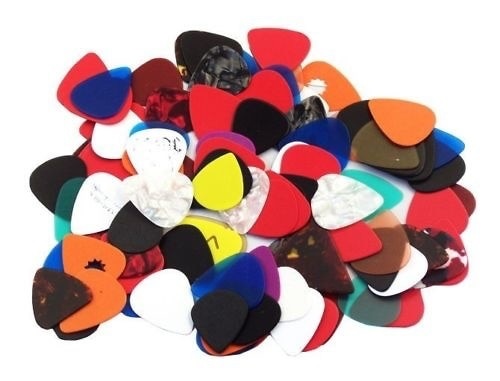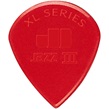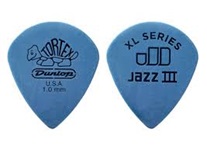Believe it or not but the size, shape, edge and thickness of a guitar pick all have a big impact on the sound of your playing. Choosing the wrong pick may make playing the guitar harder than it needs to be. Choosing the right pick will make everything easier. Having an understanding of which pick to use will make a huge difference to your playing. After reading this article you will be able to make an informed decision on which pick is right for you.

Before we get started, I want to share with you a personal story. Back when I was studying my Music Performance Degree, the head of guitar told us how he came to chose what picks he used. One day when he was younger he decided to go to a music shop and buy one of every pick. Over the next week, he spent several hours trying them all out until he settled for the one that felt and played best. 30 years later, he is still using the same Fender guitar picks and has never looked back. After hearing this, I was very excited and decided to go down to the local guitar shop on the way home. I proceeded to spend $80 and bought one of every guitar pick that they had in the guitar store. I rushed home and began experimenting.
Over the next week, I tried out all 80 guitar picks. Some of them I used for hours, while others I knew weren’t the right ones after only a few seconds. Some of them were used by my favourite artists, others I had never heard of until the day I bought them, but I tried them all. I eliminated them one by one, until I was down to the last 10. It was probably another month of experimenting before I had settled on my favourite pick (I was at University 6 hours a day 4 days a week, so I put in a fair bit of time into getting to know them) and you’ll never guess which pick I decided on…

It was the Dunlop Jazz III XL… the same guitar pick that I had been using BEFORE I conducted my experiment (ah well). I already knew I liked that style of pick. I had read in countless magazines that it was the pick of choice for heavy metal guitarists and now knew it to be true.
I went through a very lengthy process to find the right pick for me, but you may not have the time or budget. Below is a summary of the key differences you will come across in choosing a pick. This will help you make an informed decision on the best pick for you.
Choosing guitar picks based on Thickness
Here is a basic rule: The thinner the guitar pick, the more give it will have when strumming. The thicker the guitar pick, the more control you have when playing lead and fast lines. If you do a lot of acoustic guitar strumming, then a thinner pick .50mm to .80mm would suit you. If you are playing a mix of lead and rhythm guitar, then a 1.0mm thick pick would give you control all around. If you’re playing styles that demand speed and control, then a thick pick of more than 1.5m thickness would be best.
Choosing a pick based on Shape and Size
Most picks are teardrop shaped, which makes them easy to hold and provides a point of contact with the string. Most picks have rounded edges, which produce a softer sound. Those with pointed edges produce a much stronger sound and provide more control. There are also triangular-shaped 'triple picks,' which have 3 points of contact and are easy to hold. You will also find many novelty shaped picks with various special edges. The size of the pick also contributes to the ease of use and the sound of your playing. Some picks give you more leverage over the string and others feel better in your hand. Again, experiment with which one you like the feel and sound of before making a decision.
Choosing a pick based on Material
The last criteria for pick selection is the material the pick is made out of. Guitar picks are commonly made out of plastic, but can also be made out of metals, stone, wood and even bone. Plastic picks are the most common because they sound the best, are cheap to make and easy to produce. Metal picks are also popular, but can create an unwanted sound when they make contact with the string. Wooden picks can have a warm sound, but tend to wear away quickly. Stone and bone picks have little give to them and can cause you to break strings more frequently. Try a few different kinds out to see what you like the most.

I hope this guide has made it easier to decide which kind of guitar pick will be best for you. Everyone is different, and what works for someone else might be different to what works for you. Experiment with the kind of pick that you want to use, because it's all part of the fun of learning guitar.
About The Author

Michael Gumley is a renowned guitar teacher and performing musician from Melbourne, Australia. He has changed picks a few times over the years, and is always looking for the next best thing. Michael teaches beginner guitar lessons in Melbourne and has a track record of great students to prove it. He has helped countless students become great players and wants to help you too.
 519-640-2229
519-640-2229